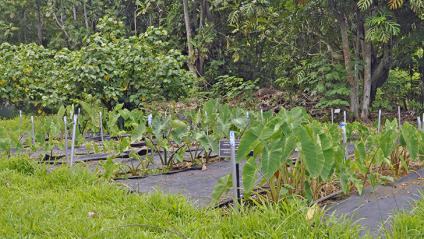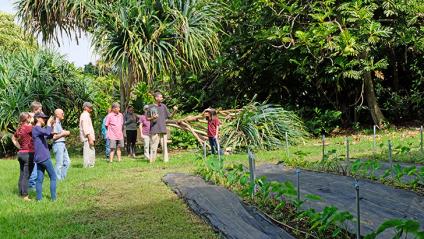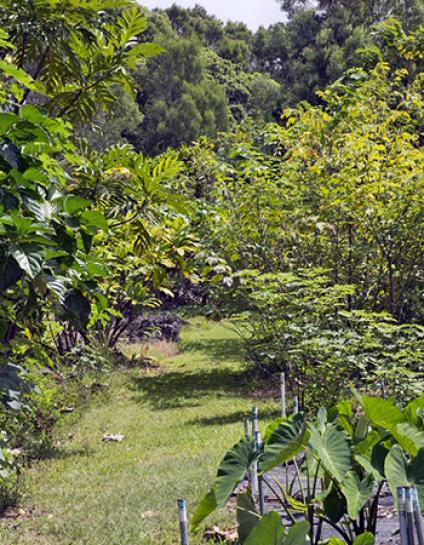Forest Service assists in continuing agroforestry in Hawaiʻi
HAWAII – The Amy B. H. Greenwell Ethnobotanical Garden in Kealakekua is Hawaii’s first “Community Forest.” The beloved garden has been closed to the public since 2016 and was listed for sale. However, with the help of the USDA Forest Service, the State of Hawai’i, the County of Hawaiʻi, the Atherton Family Foundation, the Cooke Foundation and local community members, the Garden will reopen soon under community ownership. The Gardenʻs 200-plus native plants, remnants of the Kona Field system walls, and the cultural significance of the garden, are now permanently protected and more accessible to the public than ever before.
Born in 1920 near Kona, Amy B.H. Greenwell grew up surrounding herself in the nature and culture of the Hawaiian Islands, especially during her childhood summers in Kona on Kealakekua Ranch. Part-time adventurer, achaeologist, amateur botanist, gardener and pug breeder, Amy added not only to the botanical understanding of Hawaiʻi, but also to its cultural practices. In this spirit, when Amy learned she was going to die before her time, she decided that she wanted to leave behind a legacy that embodied her values in life. Having never married, Amy decided to donate her house and attached property to the Bishop Museum to continue her commitment to the preservation of Hawaiian plants and cultural practices. Soon after Amyʻs death in 1974 the Bishop Museum planted the seeds for the impressive trees now seen 45 years later in the Ethnobotanical garden named after her.
“It’s a resource, not simply an exhibit,” said Maile Melrose, the President of the Friends of Amy B.H. Greenwell Ethnobotanical Garden and Amy’s cousin. “It’s a Hawaiian garden that tells the Hawaiian story.”
Dedicated to ethnobotany and agroforestry, the garden is home to many native plants that were and are critical to Hawaiian life and identity. Critical food plants such as Kalo (taro) and banana trees are featured in the garden alongside culturally cherished tree species such as ʻōhiʻa. The garden also features remnant stone walls from the old Kona Field system of planting that was widely used by Hawaiians. This abundance of native Hawaiian plants and culture allows visitors and residents alike to step back into history to see how native Hawaiians lived.
This shared biocultural knowledge is incredibly valuable, especially to the youth of Hawai’i. Changing climate patterns and other environmental issues face Hawai’i both now and in the future. Amy’s garden serves not only as a place for biological conservation, but also one of cultural education. The exposure of children to the unique plants of Hawai’i, alongside Hawaiian cultural perspectives, will no doubt instill passion and effort from future generations towards the protection of the Hawaiian ecosystem. As Melrose states, “the garden is really for people living 100 years from now.”
The story of Amy B.H. Greenwell Ethnobotanical Garden moves into its next step through the purchase of the Garden from the Bishop Museum by the non-profit Friends of the Amy B. H. Greenwell Ethnobotanical Garden, formed by concerned and passionate Kona residents. On top of its other highlights, the project is the first USDA Forest Service-funded “Community Forest” in the Pacific, the first conservation easement under the County of Hawaii Public Access, Open Space and Natural Resources Conservation, and the most accessible project funded by the state of Hawaii’s Legacy Lands Program.
“Ultimately, I think [Amy] wanted a place where people could come to relax and be happy,” says Melrose. Colorful ‘ōhiʻa blossoms and the sound of the breeze in the trees ensures the relaxing atmosphere, but it’s the people you find working within the garden who prove that the garden is much more than simply a nice place to spend an afternoon. Amyʻs legacy of curiosity, education, love of nature, and community lives on through her Garden. “I think she would be very pleased,” says Melrose.




